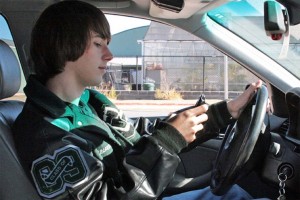These days its not just Santa wanting to know if kids have been naughty or nice, parents of teenage drivers really want to know as well.
Statistics show that teenage drivers are, well, the worst drivers on the roads. The traffic accident rates for 16- to 19-year old drivers are higher than those for any other age group, according to the National Highway Traffic Safety Administration (NHTSA).
Young people ages 15 to 24 represent only 14% of the U.S. population, but they account for 30% or $19 billion of the total costs of motor vehicle injuries among males and 28% ($7 billion) of the total costs of motor vehicle injuries among females, according to the Centers for Disease Control and Prevention.
Fortunately, there are plenty of ways for nervous parents to keep tabs on young drivers ranging from Ford Motor Co.’s MyKey to Esurance’s new telematics device, DriveSave, to a variety of devices that limit the ability of kids to send and receive text messages and phone calls.
Perhaps the best known is Ford’s MyKey technology, which is standard equipment on more than 6 million Ford and Lincoln vehicles. MyKey allows parents to control the volume on the radio, limit a vehicle’s speed to 80 mph and block incoming phone calls and hold text messages using the SYNC system.
It uses the Ford Belt-Minderwith audio mute sounds chimes and mutes the radio to remind teens to buckle up. A message on the instrument panel is also displayed: “Buckle Up to Unmute Radio.”
Insurance company, Esurance, has developed a device called DriveSafe that can monitor the driving habits of anyone using the vehicle. It installs on the onboard diagnostics port on any vehicle built after 1996 except hybrids and electric vehicles. After that, parents download the DriveSafe app on the smartphone of the teenage driver, which allow them to track driving habits via Bluetooth as well as lock out certain functions while the car is moving.
(IIHS reveals America’s safest cars. For more, Click Here.)
It also can alert parents to risky habits like accelerating too quickly, braking hard, driving past curfew, driving too far from home or speeding.
One limitation to the system is blocking texts on iPhones: no third party can block iPhone functions so teens will still be able to get texts on their phones. Android phones have no such issue. However, if they try to avoid interruption of the other restrictions by shutting off their phones, cutting the Bluetooth connections or some other method, the system sends an alert to parents.
(Click Here to see how advertisers are finding new ways to connect with drivers.)
However, if a parent really wants to see what’s going on in the car when their teenager is behind the wheel that can happen now too using Drive Cam, a video monitoring and recording device.
The device is designed to send an email when the driver makes mistakes or drives erratically. It also records the driver while he or she makes the mistake so parents can go over the footage with their teenager to help make corrections.
According to American Family Insurance, 15,000 families have used the DriveCam in 19 states since it launched in 2007. The company has recorded 65% to 70% reductions among participants in distractions, tailgating, poor scanning, intentionally unsafe driving and speeding.


With so many driver distractions, aka electronic toys…teens for the most part will continue to have excessive vehiclular incidents. We know that most adults can’t live without texting and taking on their cellphone so they have established a very bad precedent for young drivers to follow. It
s nothing short of insanity.